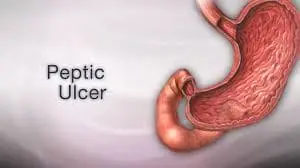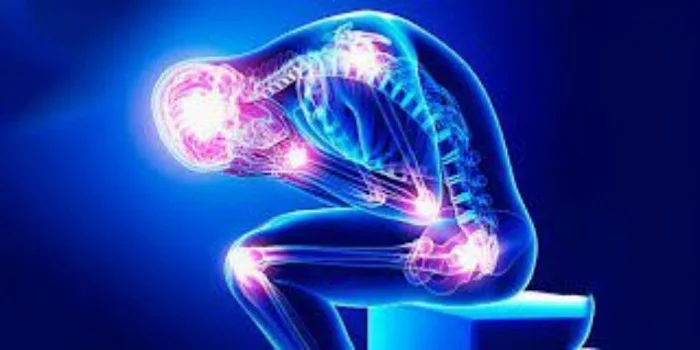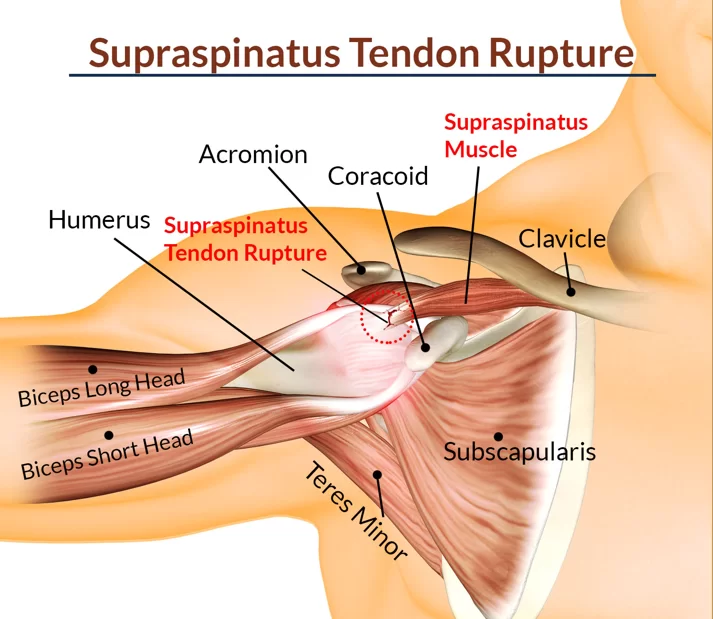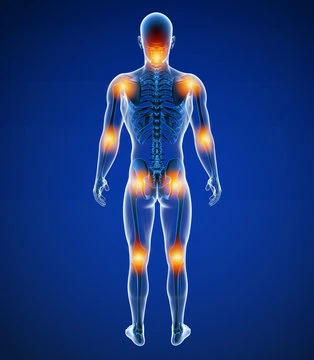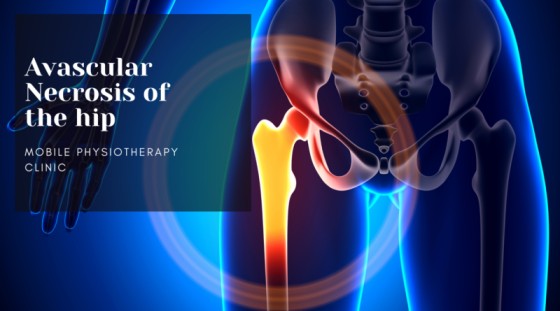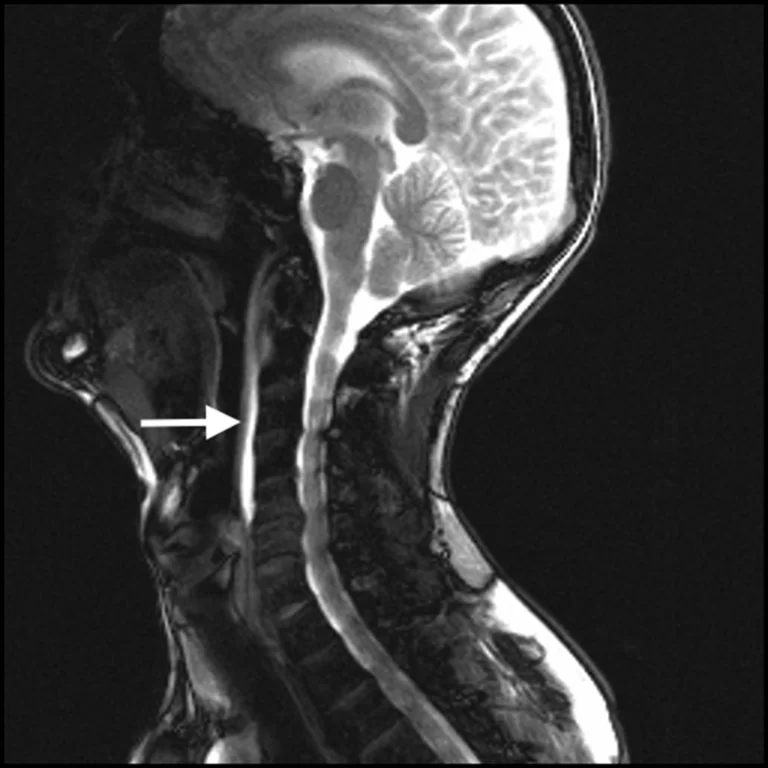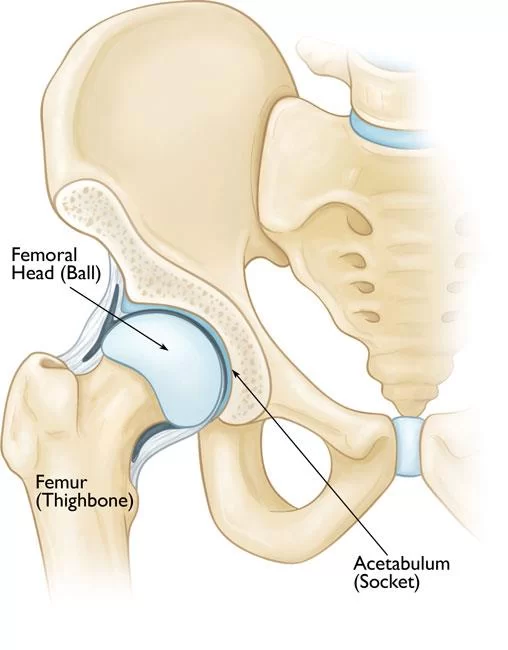Peptic Ulcer
Defination
A peptic ulcer is a painful open sore that develops on the inner lining of the stomach, upper small intestine, or esophagus. These ulcers occur when the protective mucous layer of the stomach or duodenum (the first part of the small intestine) is compromised, allowing digestive acids to erode the underlying tissues.
Stomach pain is the most typical symptom of a peptic ulcer.
Among those with peptic ulcers are:
- Gastric ulcers are ulcers that form on the inside of the stomach.
- Duodenal ulcers that develop inside the duodenum, the upper part of your small intestine
Causes of Peptic Ulcer
Common
- NSAIDs
- Medications
- Infections with H. pylori
Rare
- infection with viruses
- Crohn’s disease
- malignancy (lymphomas, gastric/lung cancer)
- Radiation treatment
- Zollinger-Ellison syndrome
- chemotherapy
- inadequate flow of blood
- Stress (burns, Head injury, acute illness)
Helicobacter Pylori-Related PUD
The gastric epithelial cells carry the gram-negative bacillus H. pylorus. Most duodenal ulcers (90%) and most stomach ulcers (70–90%) are caused by this bacterium. An H. pylori infection is typically acquired during childhood and is more common in people with lower socioeconomic levels.
The bacterium may stick to and inflame the stomach mucosa due to a broad range of virulence factors. This causes achlorhydria or hypochlorhydria, which can cause stomach ulcers.
Factors of Helicobacter Pylori Virulence
- Flagella: Allow movement in the direction of the stomach epithelium and provide motility.
- Toxins: CagA/VacA is connected to damage to host tissue and inflammation of the stomach mucosa.
- Urease: By balancing the acidic gastric environment, urease secretion protects the body by breaking down urea into ammonia.
NSAID-related PUD
After H. pylori infection, the use of nonsteroidal anti-inflammatory medicines is the second most common cause of PUD. Normally, prostaglandin production shields the stomach mucosa.
NSAIDs suppress the COX-1 enzyme, which prevents prostaglandin formation. This lowers the generation of gastrointestinal mucus and bicarbonate as well as mucosal blood flow.
Medicines
In addition to NSAIDs, the cause of PUD has been associated with corticosteroids, bisphosphonates, potassium chloride, and fluorouracil.
While the correlation between smoking and duodenal ulcers is not exact, it does appear to exist. Acidity can be caused by alcohol irritating the stomach mucosa.
Epidemiology
Peptic ulcer disease (PUD) is a worldwide issue that involves a 5% to 10% lifetime chance of occurrence. In general, fewer cases of PUD are reported globally as a result of more hygienic and sanitary environments, successful treatment, and prudent NSAID use. Compared to stomach ulcers, duodenal ulcers occur four times as frequently. Additionally, men are more likely than women to develop duodenal ulcers.
Symptoms of Peptic Ulcer
- the feeling of fullness and bloating
- Food intolerance to fat
- Heartburn
- feelings of nausea
Stomach pain that burns is the most common symptom of a peptic ulcer. Both stomach acid and an empty stomach worsen the pain that occurs. Eating particular foods that buffer stomach acid or taking an acid-reducing medicine can reduce the pain, although the pain may return later. The pain could be more severe at night and in between meals.
Less frequently, ulcers can result in serious symptoms like:
- vomiting or throwing up blood, which can have a reddish-black color.
- Stools with dark blood or that are tarry or black
Pathophysiology
An imbalance between the factors that protect and destroy the stomach mucosa is the cause of peptic ulcer disease (PUD). Risk factors that make someone more likely to develop PUD:
- H. pylori infection usage of NSAIDs
- PUD-afflicted first-degree relative
- A person who leaves a developed country
Peptic ulcers typically result in a mucosal defect that reaches the muscularis mucosa. The inner layers of the mucosa are susceptible to acidity if the outer layer of protection is compromised. Moreover, mucosal cells’ capacity to release bicarbonate is reduced.
It is well known that H. pylori causes inflammation of the stomach mucosa and colonizes it. Additionally, H. pylori impair bicarbonate secretion, which encourages the growth of acidity and stomach metaplasia.
Diagnosis
Physical and History
The age and location of the disease can affect the symptoms of peptic ulcer disease. When symptoms appear in response to meals, gastric and duodenal ulcers can be different from one another. Duodenal ulcers often cause nocturnal pain. Bloating and/or fullness in the belly is frequently reported by those who have gastric outlet obstruction.
Typical symptoms include:
- abdominal pain in the stomach area
- bloating
- feeling full in the abdomen
- vomiting and nausea
- Gained or lost weight
- condition of Melana
Symptoms that require an immediate referral are warning symptoms, such as:
- Unknowingly loss of mass in the body
- Dysphagia progression
- open bleeding in the gastrointestinal tract
- Anemia due to a lack of iron
- Repeated vomiting
- An upper gastrointestinal cancer family history
Evaluation
A physical examination, invasive and non-invasive medical testing, and a history are necessary for the diagnosis of peptic ulcer disease (PUD). A thorough medical history should be taken, and any complications should be noted. Suspicion of PUD is raised when patients report early satiety, fullness after a meal, and epigastric stomach pain.
While the pain associated with duodenal ulcers reduces after a meal, the pain associated with stomach ulcers worsens two to three hours after a meal and may cause weight loss. It is important to look for possible PUD consequences, such as bleeding, perforation, or malignancy, in any patient who presents with anemia, melena, hematemesis, or weight loss. During a physical examination, anemia symptoms and pain in the abdomen may be identified.
Investigations
The most effective diagnostic test, esophagogastroduodenoscopy (EGD), has a 90% sensitivity and specificity in identifying duodenal and stomach ulcers. Guidelines for the use of endoscopy in patients presenting with upper abdominal pain or dyspeptic symptoms suggestive of PUD have been published by the American Society of Gastrointestinal Endoscopy.
Individuals who have recently developed dyspeptic symptoms and are over 50 years old need to have an EGD performed. Regardless of age, anyone showing alert symptoms needs to have an EGD.
When using EGD is contraindicated, barium swallowing is recommended.
Testing for Helicobacter pylori:
Serologic examination
A breath test with urea has a high specificity and sensitivity. After 4–6 weeks of stopping treatment, it can be used to certify eradication. The lungs exhale radiolabeled carbon dioxide that is created by the stomach when there is urease, an enzyme generated by Helicobacter pylori, present. Additionally, H. pylori antibodies can be measured.
Endoscopic biopsy:
Due to its high cost, length of time, and invasive nature, culture is not usually advised. If the eradication treatment is unsuccessful or there is a suspicion of antibiotic resistance, it is recommended. To boost sensitivity, biopsies from at least 4–6 locations are required. Commonly, gastric ulcers are seen on the minor curvature that separates the fundus and antrum.
Abdominal computed tomography with contrast is useful in diagnosing problems such as gastric outlet obstruction and perforation, but it is not very useful in dia
Treatment of Peptic Ulcer
Pharmaceutical Treatment
Proton pump inhibitors (PPIs) and H2-receptor antagonists are two antisecretory medications used to treat peptic ulcer disease (PUD). Because PPIs are more effective and healing than H2 receptor blockers, they have generally replaced the latter.
PPIs reduce stomach acid production, which relieves symptoms and helps in recovery. Given that long-term PPI use can raise the risk of bone fractures, treatment may include calcium supplements.
Treatment options for PUD caused by NSAID use include tapering down or reducing dosage. If at all possible, corticosteroids, bisphosphonates, and anticoagulants should also be stopped. Misoprostol, an analog of prostaglandin, is occasionally used as a preventative measure against NSAID-induced peptic ulcers. For PUD caused by H. pylori, a triple regimen consisting of two antibiotics and a proton pump inhibitor is the first line of treatment. For 7 to 14 days, pantoprazole, clarithromycin, metronidazole, or amoxicillin are used. PPIs and antibiotics combine to completely eradicate H. pylori.
The selection of an antibiotic needs to consider the existence of antibiotic resistance in the surrounding milieu. Quadruple therapy using bismuth and several antibiotics is used if first-line therapy is ineffective.
Refractory Disease and Surgery Management
If the patient is not responding to medicinal treatment, is not complying, or has a significant risk of complications, surgery is recommended. A peptic ulcer larger than 5 mm in diameter that does not heal after 8–12 weeks of PPI medication is called a refractory ulcer.
Common causes include long-term NSAID usage, a persistent H. pylori infection, serious comorbidities that hinder ulcer healing, and other illnesses including gastrinoma or stomach cancer. Patients may be candidates for surgical therapy if the ulcer does not go away even after treating the aforementioned risk factors. Vagotomy and partial gastrectomy are surgical options.
Diet
Making dietary adjustments could provide some relief while receiving therapy for peptic ulcers.
It is advisable to stay away from flavors and foods that could make the stomach create acid. While this could differ from person to person, popular causes include caffeine, black pepper, garlic, and chili powder.
Alcohol should also be avoided because it has a similar impact on the stomach.
Foods high in vitamin A and easily absorbed fiber should also be included in a person’s diet. These may consist of:
Soluble fiber sources:
- apples, oranges, barley, flax seeds, oats, nuts, carrots, psyllium husk and legumes
Vitamin A sources
- sweet potatoes, liver, spinach, greens with collards and broccoli
A person may feel better if they eat a balanced diet rich in fruits and vegetables and low in strong spices and flavors.
It’s important to remember that diet cannot cure or prevent peptic ulcers, thus further treatment may be required.
Differential Diagnosis
The symptoms of the diseases that follow may have similarities to those of peptic ulcer disease, thus it’s important to understand how they present clinically to make the proper diagnosis.
Gastritis is an inflammatory condition resulting from an immune-mediated or bacterial cause that affects the stomach mucosa and causes nausea and upper abdominal pain. Peptic ulcer disease and its clinical appearance are remarkably similar.
Patients with gastroesophageal reflux disease (GERD) typically report intermittent regurgitation of food particles, excessive salivation, and a burning feeling in the lower retrosternal area and epigastrium.
In addition to stomach pain, individuals with gastric cancer typically report alarm symptoms such as loss of weight, melena, recurrent vomiting, and, in the event of metastasis, evidence of malignancy elsewhere.
Pancreatitis is characterized by severe, prolonged epigastric or right upper quadrant pain that gets worse in a supine position; patients typically have a history of gallstones or alcoholism. Increased lipase and amylase levels in the serum can help with the diagnosis.
A fatty meal can cause biliary colic, which is characterized by sporadic, intense pain in the right upper quadrant or epigastrium.
Right upper quadrant or epigastric pain, aggravated by fatty foods and accompanied by nausea and vomiting, is known as cholecystitis. The pain typically lasts for hours. Leukocytosis, tachycardia, fever, positive Murphy sign, and abnormal liver functions further differentiate this from biliary colic.
These are a few potentially life-threatening diseases that may have similar symptoms.
- Myocardial infarction: Patients with myocardial infarction, particularly those involving the inferior wall and right ventricle, can sometimes show epigastric pain along with nausea and vomiting. When a high-risk patient shows additional symptoms such as shortness of breath, dizziness, or abnormal vital signs, the doctor should be alerted to the possibility of this.
- Mesenteric ischemia: the chronic form of this condition usually appears as persistent post-prandial epigastric pain that can be misdiagnosed as peptic ulcer disease. Acute mesenteric ischemia is characterized by intense, acute onset abdominal pain. Weight loss, advanced age, and the existence of atherosclerosis risk factors should all lead to an examination for the same.
Prognosis
Peptic ulcer disease (PUD) has a very good prognosis if the underlying cause is effectively treated. It is possible to stop the ulcer from returning by practicing proper hygiene and avoiding NSAIDs, alcohol, and tobacco.
Unexpectedly, recurrence occurs often, with rates in most studies reaching 60%. The annual rate of stomach perforations caused by NSAIDs is 0.3% per patient. On the other hand, peptic ulcer disease mortality rates have markedly declined, in comparison with previous years.
Complications
Peptic ulcers may result in:
- Internal blood loss: Bleeding can be so severe that it needs hospitalization or a blood transfusion, or it can be so mild that it causes anemia. Black or bloody waste or vomit are possible symptoms of severe blood loss.
- an opening (perforation) in the wall of your stomach. Your stomach or small intestine wall may become perforated by peptic ulcers, placing you at risk for a dangerous abdominal infection known as peritonitis.
- obstructing. Peptic ulcers may prevent food from passing through the digestive tract, making it difficult for you to feel full, and causing you to throw up and lose weight due to either scarring or swelling from inflammation.
Patient Education
Peptic ulcer disease (PUD) patients should be advised against using potentially harmful substances such as aspirin, alcohol, cigarettes, caffeine, and nonsteroidal anti-inflammatory medicines (NSAIDs). Use the lowest dose of NSAIDs if necessary, and think about prophylaxis for NSAID-using patients. Patients should be encouraged to lose weight because there is a substantial correlation between obesity and peptic ulcer disease. In some situations, counseling for stress management may be beneficial.
When to Contact with a Healthcare Professional
Get immediate medical attention if you:
- experience sudden, severe pain in the stomach
- have a firm, hard abdomen that is sensitive to the touch..
- Show symptoms of shock, including dizziness, sweating excessively, or confusion
- Have blood in your stool or vomit (particularly if it’s dark, tarry black or maroon)
Get in contact with the provider if:
- You get vertigo or feeling light-headed.
- You’re experiencing symptoms of an ulcer.
Other Issues
Based on size, ulcers differentiate from erosions. Lesions with a diameter of less than 5 mm are called erosions, whereas lesions with a diameter larger than 5 mm are called ulcers. Because COX-2 is not expressed in the stomach mucosa, COX-2 selective NSAIDs are less likely to cause PUD. thereby, COX-2 selective NSAIDs are recommended for patients with a history of PUD.
Zollinger-Ellison syndrome or gastrinoma is caused by a gastrin-producing endocrine tumor that typically arises from the duodenum or pancreas. Multiple duodenal and jejunal ulcers are the outcome. By determining the serum gastrin levels, it can be diagnosed.
Results of Healthcare Teams
It is advised to treat peptic ulcer disease using an evidence-based strategy. Millions of people worldwide suffer from PUD, a relatively common disease. Its morbidity is severe if left untreated. Most PUD patients see their primary care physician, although some may visit an emergency room, urgent care facility, or outpatient clinic.
Healthcare professionals, especially nurses, should be aware of PUD because its presentation is frequently unclear. Treatment may be delayed since the stomach pain might be mistaken for a variety of other conditions.
After the diagnosis, it’s important to teach the patient new lifestyle habits, such as quitting smoking, avoiding alcohol and caffeinated drinks, and limiting the amount of NSAIDs they take. The role of gastroenterology nurses is to educate, monitor, and update the team on the patient’s status. For both symptom relief and a cure, the patient and the pharmacist should receive medication compliance education.
There is evidence that obesity may be a cause of peptic ulcer disease, thus it is advisable to seek dietary advice. The morbidity of peptic ulcer disease can only be reduced by a cooperative effort. Although symptom recurrence is not unusual, the majority of PUD patients treated with the triple regimen or PPI have great results.
Lifestyle choices and homemade remedies
The following may help you get over the pain and discomfort of a stomach ulcer:
- Think about changing your painkillers. Consult your doctor if acetaminophen (Tylenol, among others) would be a good alternative for you if you take painkillers regularly.
- Manage your stress. The symptoms and indicators of a peptic ulcer may get worse under stress. Look at the things that are causing your stress and take action to alleviate them. While some stress cannot be avoided, you can learn coping mechanisms to deal with it by working out, hanging out with friends, or journaling.
- Avoid smoking. Due to potential disruptions to the stomach’s protective lining, smoking increases the risk of stomach ulcers. Additionally, smoking raises gastric acid.
- Avoid or stay away from alcohol. Drinking too much alcohol can erode and irritate the mucosa lining your intestines and stomach, which can lead to bleeding and inflammation.
FAQ
What is the primary cause of ulcerative peptic reflux?
The most common cause of stomach ulcers is an infection with the Helicobacter pylori (H pylori) bacteria. These bacteria live in the digestive tracts of the majority of patients with peptic ulcers. However, a lot of people with these bacteria in their stomachs do not have ulcers.
Do peptic ulcers go away?
If untreated for a while, peptic ulcers often return. If you take your medication as prescribed and follow your doctor’s instructions, there’s a strong possibility that the H pylori infection will be treated. You won’t have to worry as much about developing another ulcer.
How do you treat a peptic ulcer?
The cause of peptic ulcers affects how to treat them. Typically, treatment involves taking medication that helps in the healing of your ulcer, getting rid of or minimizing the use of NSAIDs, and removing the H. pylori bacteria if it is present. Medications may consist of drugs with antibiotics for eliminating H. pylori
Can a peptic ulcer be treated?
The cause of your stomach ulcer depends on how to treat it. Most ulcers recover in a few months with treatment. Proton pump inhibitors (PPIs) plus an antibiotic course are advised if a Helicobacter pylori (H. pylori) bacterial infection is the cause of your stomach ulcer.
Which 5 medications are used for peptic ulcers?
Proton pump inhibitors, cytoprotective agents, antimicrobials, antidiarrheal agents, and H2-receptor antagonists are among the medications used to treat peptic ulcer disease.
References
- Felman, A. (2023, November 8). What’s to know about peptic ulcers? https://www.medicalnewstoday.com/articles/9273
- Peptic ulcer – Symptoms and causes – Mayo Clinic. (2022, June 11). Mayo Clinic. https://www.mayoclinic.org/diseases-conditions/peptic-ulcer/symptoms-causes/syc-20354223
- Malik, T. F. (2023, June 5). Peptic Ulcer Disease. StatPearls – NCBI Bookshelf. https://www.ncbi.nlm.nih.gov/books/NBK534792/

